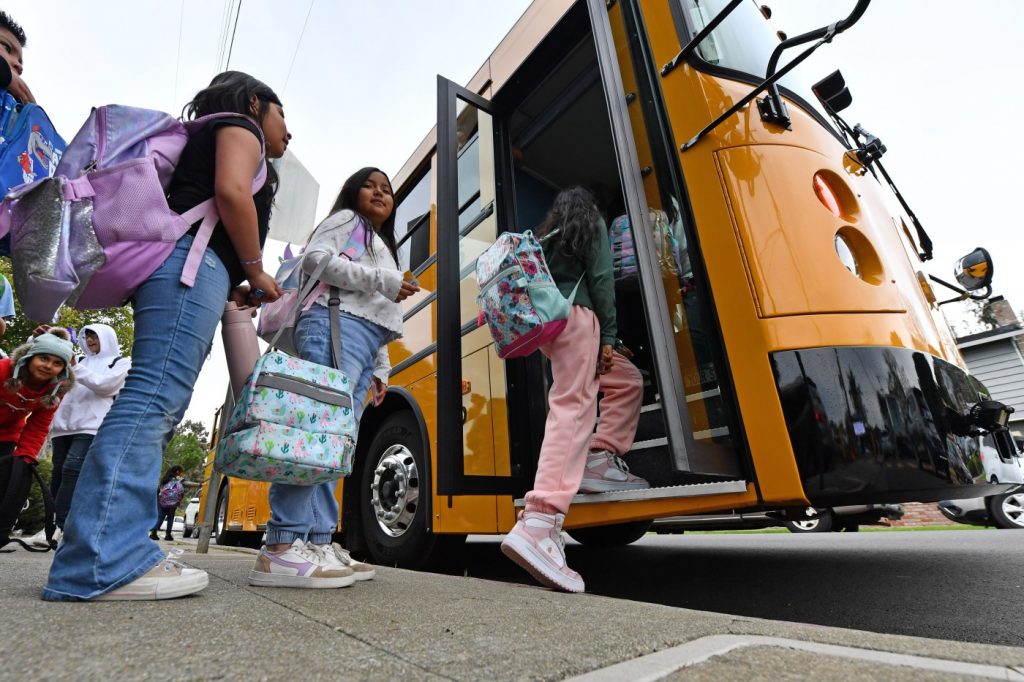Financial support for the nearly 6 million students in California’s public schools is not only the largest chunk of the state budget, but for the past half-century it has been its most contentious element.
This year is no exception as Gov. Gavin Newsom faces stiff opposition from the education establishment for a new fiscal maneuver to cope with a massive budget deficit.
A bit of history places it in context.
Until the 1970s, local school systems were financed almost entirely from property taxes. Since the amount of taxable property varied widely from district to district, so did their revenues. Districts with high levels of commercial and industrial property could generate large amounts of revenue with low rates, but those with little taxable property other than housing had to impose high rates.
In 1971, the state Supreme Court declared that the disparity unconstitutionally “discriminates against the poor because it makes the quality of a child’s education a function of the wealth of his parents and neighbors.” The state was ordered to adopt “equalization” in state aid to reduce the differences and it immediately became an annual budget issue.
In 1975, Jerry Brown’s first year as governor, Republicans blocked passage of his budget, demanding more equalization money because schools in GOP-leaning suburbs, lacking big commercial or industrial properties, were often on the short end of the disparity.
The game changed again in 1978 when voters passed Proposition 13, imposing tight limits on property taxes. The state responded with a bailout to prop up schools and local governments as property tax revenues plummeted.
With the state having become the primary source of school support, education groups in 1988 sponsored another ballot measure, Proposition 98, creating a very complex formula to determine schools’ share of the budget.
Prop. 98 did not, however, stop the political infighting. It just made it much more complicated due to differing interpretations over what it required and how it would be enforced, particularly during the state’s periodic deficits.
A few years after Prop. 98’s passage, for instance, then-Gov. Pete Wilson and the Legislature created the Educational Revenue Augmentation Fund, which diverted more local property tax money to schools, therefore reducing the required appropriation from a state budget leaking red ink. It forced local governments to eat a multibillion-dollar shortfall that was later bridged by a state sales tax increase.
This year’s version is another rob-Peter-to-pay-Paul maneuver that would remove $8.8 billion in overpayments of state aid from previous years from the budget and treat it, in effect, as a off-the-books loan to be written off over five years. Concurrently the state would tap a special education reserve fund for $8.5 billion shore up the state budget.
Gabe Petek, the Legislature’s budget analyst, has been highly critical of this maneuver, saying it is “bad fiscal policy, sets a problematic precedent, and creates a binding obligation on the state that will worsen out‑year deficits and require more difficult decisions.”
The education establishment is even more critical.
Related Articles
Walters: California’s lagging economy hinders efforts to close budget deficit
Educators call Gov. Gavin Newsom’s slash to school funding ‘unconstitutional’
Walters: How California’s budget morphed into a $45 billion deficit in two years
Walters: How California’s new fixed utility charge got its sneaky start in the Legislature
Letters: Missing data | Runaway bureaucracy | CalWORKs cuts | State accountability | U.N. peacekeeping
“This maneuver may seem innocuous on its face — or even generous — as it could ease the pain of the 2024–25 budget,” the California School Boards Association declared. “Yet, in reality, this sleight of hand would reduce education funding by tens of billions of dollars in the years to come and remove the funding safety net Proposition 98 has provided schools for more than three decades.”
California Teachers Association President David Goldberg called the budget maneuver “an outright assault on public school funding” that would “wreak havoc for years to come.”
The CSBA and the CTA have often been at odds, but are united this year and threatening lawsuits if Newsom’s plan is enacted. In other words, it’s just another normal year in the abnormal world of school finance.
Dan Walters is a CalMatters columnist.


